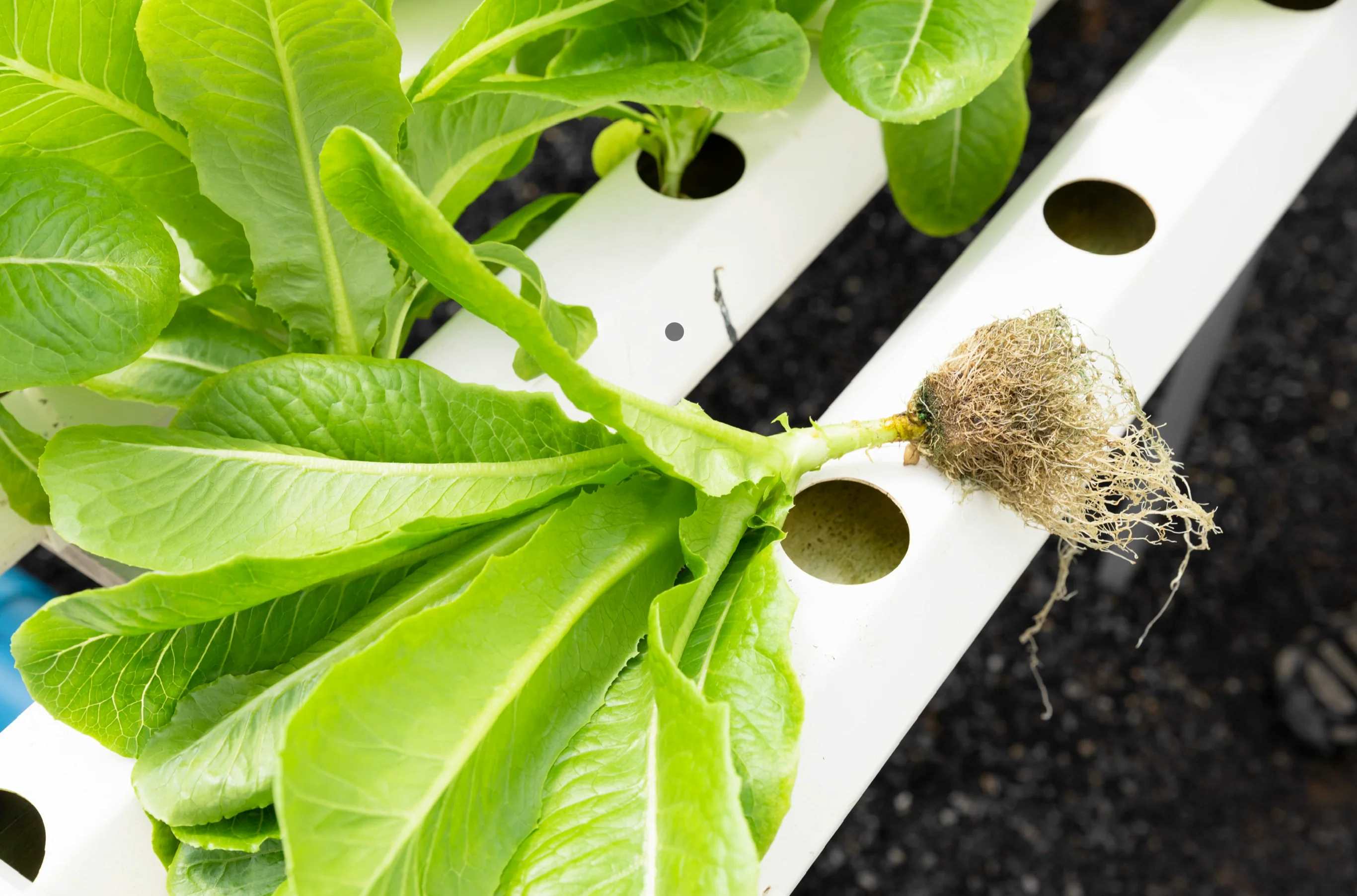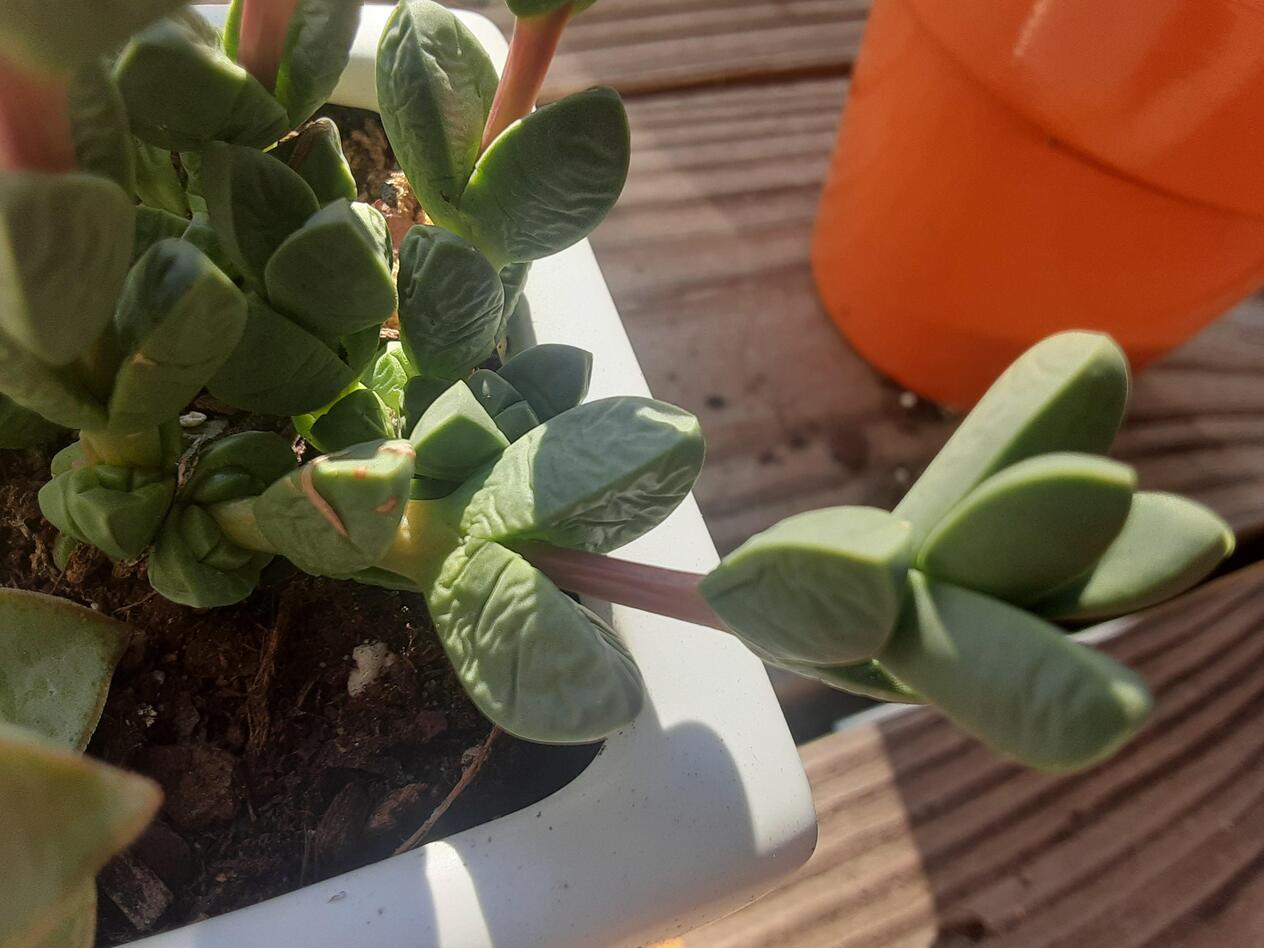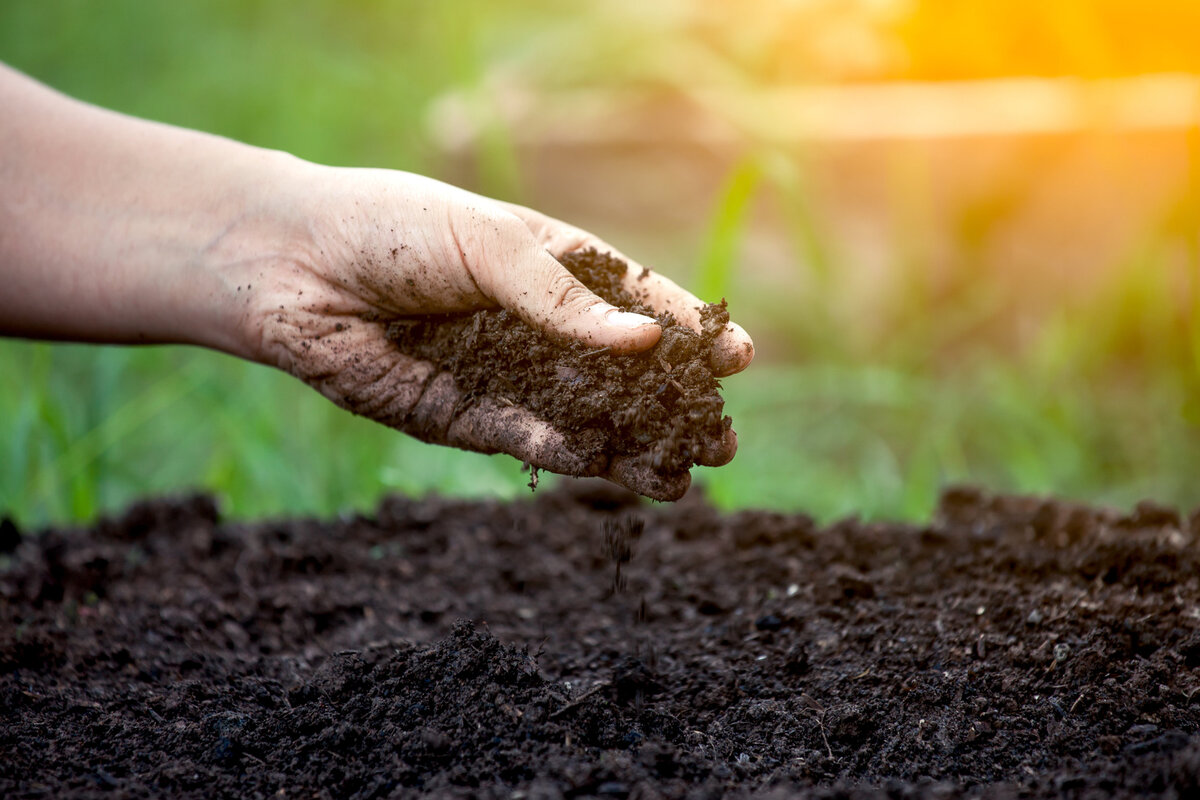(Many of the links in this article redirect to a specific reviewed product. Your purchase of these products through affiliate links helps to generate commission for Chicagolandgardening.com, at no extra cost. Learn more)
Why Does My pH Keep Dropping in My Hydroponics?
Introduction
Hydroponics is a popular gardening method that utilizes nutrient-rich water instead of soil to grow plants. It offers numerous advantages such as faster growth, higher yields, and the ability to grow plants in limited spaces. However, one common challenge that hydroponic gardeners face is the fluctuation of pH levels in their nutrient solution.
pH refers to the acidity or alkalinity of a substance and plays a crucial role in the health and development of plants. In hydroponics, maintaining the optimal pH range is essential for nutrient absorption and overall plant vitality. Unfortunately, many hydroponic gardeners find themselves dealing with the issue of pH dropping, which can negatively impact plant growth and yield.
Understanding why pH levels drop in hydroponics and how to address this issue is crucial for successful gardening. This article will explore the factors that contribute to pH fluctuations in hydroponic systems and provide practical solutions to manage and maintain optimal pH levels for your plants.
Understanding pH in Hydroponics
Before delving into the reasons behind pH fluctuations in hydroponics, it’s important to have a solid understanding of what pH is and its significance in plant growth. pH is a measure of the acidity or alkalinity of a solution, ranging from 0 to 14, with 7 being considered neutral. A pH below 7 is acidic, while a pH above 7 is alkaline.
In hydroponics, the optimal pH range for nutrient absorption varies slightly depending on the plant species. Generally, most plants thrive in a slightly acidic to neutral range of 5.5 to 6.5. Within this range, essential nutrients are readily available to the plants, facilitating their growth and development.
pH levels directly influence nutrient availability by affecting how well essential nutrients are dissolved in water. In hydroponics, plants rely solely on the nutrient solution for their growth requirements, making it crucial to maintain the appropriate pH level.
pH levels can be monitored using pH testing methods such as pH test strips or electronic pH meters. Regular monitoring of pH levels is essential to identify any fluctuations or deviations that may occur.
In the next sections, we will explore the various factors that contribute to pH fluctuations in hydroponic systems and discuss effective strategies to manage them.
Factors Affecting pH in Hydroponics
Several factors can contribute to the fluctuation of pH levels in hydroponic systems. Understanding these factors is essential for effectively managing and maintaining optimal pH levels for your plants. Let’s take a closer look at some of the key factors that can affect pH in hydroponics.
- Nutrient Solution Imbalance: The nutrient solution used in hydroponics contains various essential nutrients for plant growth. However, if the nutrient solution is not properly balanced, it can lead to pH fluctuations. Imbalances can occur when there is an excess or deficiency of certain nutrients, which can impact the pH levels.
- Water Source Issues: The source of water used in hydroponic systems can also influence pH levels. Tap water, for example, can have a high pH due to the presence of minerals. Conversely, rainwater or reverse osmosis water may have a low pH. It’s important to test and adjust the pH of the water before adding it to your nutrient solution.
- Root Zone Conditions: The health and condition of the plant’s root zone can significantly impact pH levels. When roots become unhealthy or damaged, they may release certain compounds that can alter the pH of the nutrient solution. Additionally, root diseases or nutrient deficiencies can affect nutrient uptake, leading to pH fluctuations.
- Biological Activity: The presence of beneficial microorganisms and bacteria in the hydroponic system can influence pH levels. These microorganisms can metabolize organic matter, releasing acids or alkaline compounds that can change the pH of the nutrient solution. Monitoring and maintaining a proper balance of these beneficial microorganisms is essential for pH stability.
It’s important to note that these factors are interconnected, and a disturbance in one area can impact pH levels in another. Regular monitoring and understanding of these factors can help pinpoint the cause of pH fluctuations and enable you to take appropriate measures to address them.
Nutrient Solution Imbalance
The balance of nutrients in the hydroponic nutrient solution is crucial for maintaining optimal pH levels. If the nutrient solution is imbalanced, with an excess or deficiency of certain nutrients, it can lead to fluctuations in pH levels. Let’s explore the factors that can contribute to nutrient solution imbalance and how to address them.
Nutrient Concentration: Using too high or too low nutrient concentrations in the solution can disrupt the pH balance. It’s essential to closely follow the recommended nutrient dosage provided by the manufacturer for the specific plant species you are growing. It’s also important to regularly monitor the electrical conductivity (EC) levels of the nutrient solution and adjust accordingly.
Imbalanced Nutrient Ratios: Each plant has specific nutrient requirements, and maintaining the proper balance between essential elements is vital. If certain nutrients are present in excess or deficiency, it can impact the pH levels. Different plants may require different nutrient ratios, so it’s essential to choose a nutrient formulation that suits the specific plant species you are cultivating.
pH-Dependent Nutrients: Some nutrients are more easily absorbed by plants at specific pH ranges. For example, iron availability to plants decreases at higher pH levels. Therefore, maintaining the appropriate pH range ensures optimal nutrient uptake for all essential elements.
Incorrect pH Adjustments: Adding pH adjusters, such as pH up or pH down solutions, can help regulate the pH levels of the nutrient solution. However, it is important to carefully follow the instructions and make gradual adjustments to avoid overcorrection. Adding too much pH adjuster can cause a sudden drop or rise in pH levels, leading to imbalances.
To prevent nutrient solution imbalances, ensure that you use high-quality, well-balanced hydroponic nutrients specifically formulated for the type of plants you are growing. Regularly monitor the pH and nutrient levels of the solution and make adjustments as needed. By maintaining a proper nutrient balance, you can minimize pH fluctuations and promote healthy plant growth in your hydroponic system.
Water Source Issues
The source of water in your hydroponic system can have a significant impact on pH levels. Different water sources can have varying pH levels, with tap water often containing minerals that can raise the pH and rainwater or reverse osmosis water having a lower pH. Let’s explore the water source issues that can contribute to pH fluctuations and how to address them.
Tap Water: Tap water often contains minerals such as calcium and magnesium that can raise the pH of your nutrient solution. High pH levels can lead to nutrient lockout, where essential elements become less available to plants. If you are using tap water, it is important to test its pH and adjust it to the appropriate range for your plants. pH adjusters like citric acid or phosphoric acid can be used to lower the pH if necessary.
Rainwater or Reverse Osmosis Water: Rainwater or reverse osmosis (RO) water tends to have a lower pH due to its lack of minerals. While this may seem advantageous, it’s important to note that plants require some essential minerals for optimal growth. If you are using rainwater or RO water, it is essential to ensure that your nutrient solution contains the necessary minerals. Adding a calcium and magnesium supplement can help provide these vital elements.
Water Quality: The quality of the water used in your hydroponic system can also impact pH levels. Water containing high levels of chlorine or other contaminants can affect the pH and overall health of your plants. Using a water filter or allowing the water to sit out for 24 hours can help dissipate chlorine and other chemicals. Additionally, regularly maintaining the cleanliness of your hydroponic system and flushing it with fresh, clean water can help prevent pH fluctuations caused by water quality issues.
It is important to test the pH and quality of your water source regularly. By monitoring and adjusting the pH of your water and ensuring it contains the necessary minerals, you can maintain stable pH levels in your hydroponic system. This will help create an optimal environment for nutrient uptake, promoting healthy plant growth and maximizing yields.
Root Zone Conditions
The health and condition of the plant’s root zone play a vital role in pH stability in hydroponic systems. When the roots are unhealthy or damaged, they can release compounds that can alter the pH of the nutrient solution. Additionally, root diseases or nutrient deficiencies can hinder nutrient uptake, leading to pH fluctuations. Let’s explore the factors related to root zone conditions that can affect pH levels and how to address them.
Root Health: Maintaining healthy roots is crucial for stable pH levels. Proper oxygenation, adequate moisture levels, and an appropriate root environment are all essential. Oxygen levels should be monitored and maintained in the root zone to prevent root rot and ensure sufficient respiration. Good drainage and avoiding overwatering can help prevent waterlogged conditions that can negatively impact root health.
Root Diseases and Infections: Root diseases, such as Pythium or Fusarium, can cause root damage and lead to pH fluctuations. These diseases are often influenced by factors such as high humidity, poor sanitation practices, or contaminated nutrient solutions. Regular inspections and implementing proper sanitation measures can help prevent the occurrence and spread of root diseases.
Nutrient Deficiencies: Nutrient deficiencies can affect the overall health and function of the roots, impacting their ability to absorb essential elements. When plants experience nutrient deficiencies, their roots may release compounds in an attempt to acquire the necessary nutrients, resulting in changes in the pH of the nutrient solution. Providing a well-balanced nutrient solution and regularly checking for nutrient deficiencies can help prevent these imbalances.
Root Zone pH Buffering: Adding a pH buffering agent to the growing medium or root zone can help stabilize pH levels. Buffering agents, such as vermiculite or perlite, can help maintain a more stable pH environment by absorbing and releasing excess or deficient ions as needed. This buffering action can minimize the impact of pH fluctuations caused by root activity.
The root zone is crucial for nutrient uptake and pH stability in hydroponic systems. By maintaining healthy roots, preventing root diseases, addressing nutrient deficiencies, and implementing pH buffering techniques, you can create a stable and optimal environment for your plants. Regular monitoring and adjustments will help ensure a well-functioning root zone and promote healthy growth in your hydroponic garden.
Biological Activity
The presence of beneficial microorganisms and bacteria in the hydroponic system can have a significant impact on pH levels. These microorganisms play a crucial role in nutrient cycling and can metabolize organic matter, releasing acids or alkaline compounds that can change the pH of the nutrient solution. Understanding and managing biological activity is essential for maintaining pH stability in hydroponics. Let’s explore this further.
Beneficial Microorganisms: Beneficial bacteria and fungi, such as mycorrhizae and nitrogen-fixing bacteria, can enhance nutrient absorption and improve plant health. These microorganisms can break down organic matter, releasing nutrients and modifying the pH of the nutrient solution. It’s important to foster a diverse and balanced microbial community by using organic amendments or microbial products specifically designed for hydroponic systems.
Microbial Imbalances: Imbalances in microbial populations can disrupt the pH stability in hydroponics. An excessive presence of certain microorganisms can lead to an overproduction of organic acids or bases, causing the pH to shift. On the other hand, a lack of beneficial microorganisms can result in insufficient nutrient cycling, leading to nutrient deficiencies and pH imbalances. Regularly monitoring and adjusting the microbial population can help maintain pH stability.
Water and Air Circulation: Proper water and air circulation within the hydroponic system play a crucial role in promoting beneficial microbial activity. Stagnant water or poor oxygenation can lead to the growth of harmful microorganisms, which can disrupt pH levels. Installing air stones or air pumps, and implementing a recirculating system, can help promote a healthy microbial environment and maintain pH stability.
Monitoring Biological Activity: Regular monitoring of microbial activity is essential for pH stability. This can be done by measuring the electrical conductivity (EC) and pH of the nutrient solution, as well as visually inspecting the system for any signs of microbial imbalances or diseases. Adjustments can be made by adding microbial products or adjusting nutrient levels to maintain a balanced and healthy microbial community.
By understanding and managing the biological activity in your hydroponic system, you can promote a stable pH environment. Foster a diverse and balanced microbial community, ensure proper water and air circulation, and monitor the system regularly. These practices will help create an optimal growing environment and enhance the overall health and productivity of your hydroponic garden.
Common Symptoms of Dropping pH
When the pH in a hydroponic system drops below the optimal range, it can have detrimental effects on plant health and growth. Recognizing the common symptoms of dropping pH is crucial for identifying and addressing this issue before it causes significant damage. Let’s explore some of the common symptoms that may indicate a dropping pH in your hydroponic system.
- Leaf Discoloration: One of the first signs of dropping pH is often a change in leaf color. Leaves may start to turn yellow or exhibit unusual blotches or streaks. This discoloration occurs because certain essential nutrients become less available to the plants at low pH levels, leading to nutrient deficiencies.
- Stunted Growth: Plants with a dropping pH may experience stunted growth or a slowed growth rate. This occurs because the plants are unable to access the necessary nutrients for proper development. Inadequate nutrient absorption can result in smaller or underdeveloped leaves, stems, and overall plant size.
- Poor Root Health: Dropping pH can also negatively impact root health. Roots may become discolored or show signs of rotting. Additionally, the roots may appear stunted, with a lack of healthy white root tips. Unhealthy roots are less efficient at absorbing nutrients and water, further exacerbating nutrient deficiencies and growth problems.
- Reduced Nutrient Uptake: Nutrient deficiencies are a common consequence of dropping pH. The lower pH levels can restrict the availability and uptake of essential nutrients by the plants. As a result, plants may exhibit symptoms of specific nutrient deficiencies, such as yellowing leaves due to lack of nitrogen or chlorosis caused by iron deficiency.
- Inhibited Flower or Fruit Production: Dropping pH can also negatively impact flower or fruit production. Plants may produce fewer or smaller flowers or fruits that fail to reach their full potential. This is because dropping pH affects the plants’ ability to efficiently transfer nutrients to reproductive structures.
It is important to regularly monitor the pH levels of your hydroponic system and be vigilant for any signs of dropping pH. Promptly addressing pH fluctuations can help prevent further damage and allow your plants to thrive. Adjusting the pH of the nutrient solution, addressing nutrient deficiencies, and ensuring proper root health are critical steps in maintaining stable pH levels and promoting robust plant growth in your hydroponic garden.
Managing pH in Hydroponics
Maintaining the optimal pH range in your hydroponic system is essential for promoting healthy plant growth and maximizing yields. Fortunately, there are several strategies you can employ to effectively manage and stabilize pH levels. Let’s explore some key management practices to ensure pH stability in your hydroponic garden.
Regular Monitoring: Regularly monitoring pH levels is essential for catching any fluctuations or deviations early on. Use pH test strips or an electronic pH meter to measure the pH of the nutrient solution on a scheduled basis. This will allow you to identify any pH shifts and take immediate action.
Adjusting pH Levels: If you identify that the pH is too high or too low, you will need to adjust it back to the optimal range. pH adjusters such as pH up or pH down solutions can be used to increase or decrease the pH, respectively. Follow the instructions carefully and make gradual adjustments to avoid overcorrection. It’s important to note that different types of hydroponic systems may require different pH adjustment strategies, so tailor your approach accordingly.
Choosing the Right Nutrients: Selecting the appropriate hydroponic nutrients can play a significant role in maintaining pH stability. Choose nutrient formulations that are specifically designed for hydroponics and are suitable for the plant species that you are growing. High-quality, balanced nutrients will help provide the necessary elements to support healthy plant growth and minimize nutrient imbalances that can disrupt pH levels.
Maintaining Root Health: Healthy roots are crucial for maintaining pH stability in hydroponics. Ensure proper oxygenation and moisture levels in the root zone. Avoid overwatering or allowing roots to become waterlogged, as this can lead to root rot and pH fluctuations. Regularly inspect the roots for signs of disease or nutrient deficiencies, and address any issues promptly to maintain optimal root health.
By employing these management practices, you can maintain stable pH levels in your hydroponic system. Regular monitoring, appropriate pH adjustments, using quality nutrients, and ensuring root health are key steps in creating an optimal environment for your plants to thrive. With a well-maintained pH, you can enjoy healthy and productive hydroponic gardening year-round.
Regular Monitoring
Regular monitoring of pH levels is a crucial aspect of successful hydroponic gardening. By keeping a close eye on pH levels, you can quickly identify any fluctuations or deviations and take immediate corrective action. Let’s explore the importance of regular pH monitoring and how to incorporate it into your hydroponic routine.
Frequency of Monitoring: The frequency of pH monitoring will depend on the specific needs of your hydroponic system. In general, it is recommended to monitor pH levels at least once a day or every few days. This regular monitoring will allow you to catch any potential pH shifts early on and prevent them from causing significant harm to your plants.
Testing Methods: There are several methods available for testing pH levels in your hydroponic system. pH test strips are a convenient and cost-effective option. Simply dip a test strip into the nutrient solution and compare the color change to the provided pH scale. Electronic pH meters are another popular choice, offering accurate and precise readings. Choose the method that is most convenient and reliable for you.
Recording and Tracking: It is essential to record and track pH measurements consistently. Keeping a log of pH readings over time will allow you to identify trends or patterns that may indicate issues in your hydroponic system. This data can help you make informed decisions about pH adjustment strategies and provide insights into the overall health of your plants.
Spotting Deviations: Regular monitoring will enable you to spot any sudden or drastic deviations in pH levels. It’s important to be aware of the optimal pH range for the specific plants you are growing and to take action if the pH falls outside of this range. Promptly addressing any pH deviations can prevent nutrient deficiencies, minimize plant stress, and maintain optimal nutrient uptake.
Additional Monitoring Parameters: While pH is a critical parameter in hydroponics, it’s also beneficial to monitor other factors that can impact pH stability, such as electrical conductivity (EC) and nutrient concentrations. These additional measurements can provide a comprehensive view of the overall nutrient balance in your system and help you address any imbalances that may affect pH levels.
Regular monitoring of pH levels is a fundamental aspect of successful hydroponic gardening. By incorporating regular pH testing into your routine, recording and tracking measurements, and promptly addressing any deviations, you can maintain a stable and optimal pH environment for your plants. This proactive approach will contribute to healthy plant growth and maximize your hydroponic gardening success.
Adjusting pH Levels
Maintaining the proper pH range in your hydroponic system is crucial for optimal nutrient uptake and plant growth. If you find that the pH levels in your nutrient solution are too high or too low, adjustments need to be made to bring it back into the optimal range. Let’s explore some key considerations and methods for adjusting pH levels in hydroponics.
pH Up and pH Down Solutions: pH adjusters are commonly used to raise or lower the pH of the nutrient solution. pH up solutions, such as potassium hydroxide or calcium carbonate, are used to increase pH levels. pH down solutions, such as phosphoric acid or citric acid, are used to decrease pH levels. When adding pH adjusters, it is important to follow the manufacturer’s instructions and make gradual adjustments to avoid overcorrection.
Gradual Adjustments: Sudden and drastic pH adjustments can shock the plants and disturb nutrient uptake. It is advisable to make small adjustments over time, allowing the plants to acclimate to the changes. Monitor the pH levels closely after each adjustment and continue to make incremental changes until the desired pH is achieved.
Mixing and Circulation: After adding pH adjusters, ensure that the nutrient solution is thoroughly mixed to distribute the adjusters evenly. Proper mixing can be achieved by using an air stone or a mixing pump. Adequate circulation throughout the hydroponic system helps maintain pH consistency and ensures that all plants receive the adjusted nutrient solution.
Test and Retest: After adjusting the pH levels, it is essential to retest the nutrient solution to confirm that the desired pH range has been reached. Use pH test strips or a pH meter to verify the pH. If necessary, make further adjustments until the optimal range is achieved. Regular testing and retesting will help maintain pH stability over time.
Water Source: The quality and pH of the water used to prepare the nutrient solution can also impact the pH levels. Test the pH of the water source and adjust it if necessary before adding nutrients. This ensures that the nutrient solution starts with the appropriate pH, which makes it easier to maintain pH stability throughout the growth cycle.
Keep Records: It is beneficial to keep records of the pH adjustments made, the amount of pH adjusters used, and the resulting pH levels. This documentation will help you track trends and patterns and make more informed decisions about future adjustments. It can also provide insights into the specific requirements of your hydroponic system and the plants you are growing.
Adjusting pH levels in hydroponics is a critical task to ensure optimal plant health and growth. With proper consideration, gradual adjustments, and regular testing, you can maintain a stable pH environment in your hydroponic system. By monitoring and adjusting pH levels, you will create the ideal conditions for nutrient absorption and promote the thriving growth of your hydroponic plants.
Choosing the Right Nutrients
Selecting the right hydroponic nutrients is essential for maintaining the optimal pH range and ensuring healthy plant growth. The nutrient solution provides essential elements for plants to thrive in a soil-less environment. Understanding the importance of choosing the right nutrients and their impact on pH stability is key. Let’s explore some considerations when selecting hydroponic nutrients.
Formulated for Hydroponics: Look for nutrients that are specifically formulated for hydroponic gardening. These nutrients are designed to provide a balanced supply of essential elements needed for plant growth and development. They often come in concentrated forms and are readily available for plants to absorb.
Plant-Specific Nutrients: Different plants have varying nutrient requirements, so it’s important to choose nutrients that suit the plants you are growing. Some nutrient formulations are specifically designed for certain plant families or growth stages. Ensure that the nutrients you select align with the specific needs of your plants to promote optimal nutrition and growth.
Complete and Balanced Formulas: Look for hydroponic nutrient solutions that provide a complete range of essential elements, including macronutrients (nitrogen, phosphorus, and potassium) and micronutrients (iron, zinc, manganese, etc.). A well-balanced nutrient formula will help prevent nutrient deficiencies and imbalances that can disrupt pH levels and inhibit plant growth.
pH-Balanced Nutrients: Some nutrient formulations are designed to help maintain optimal pH levels in hydroponic systems. These pH-balanced nutrients can help buffer the solution and provide elements that promote pH stability. They can aid in minimizing pH fluctuations and ensure nutrient availability to the plants within the desired pH range.
Quality and Reputation: Choose high-quality nutrient brands from reputable suppliers. Quality nutrients are made from premium ingredients and undergo rigorous quality control processes to ensure consistency and purity. Reviews and recommendations from experienced hydroponic gardeners can also help guide you in selecting reliable nutrient brands.
Manufacturer’s Guidelines: Follow the manufacturer’s guidelines and recommended dosages for your chosen nutrient formulation. Overfeeding plants with nutrients can lead to nutrient imbalances and pH disturbances, while underfeeding can result in nutrient deficiencies. Adhering to the manufacturer’s instructions will help maintain the nutrient balance and pH stability in your hydroponic system.
Investing in high-quality, plant-specific hydroponic nutrients with balanced formulas will provide a solid foundation for maintaining optimal pH levels. Regularly monitoring the nutrient solution and adjusting the dosages as needed will help ensure proper nutrient uptake and promote healthy plant growth. By choosing the right nutrients, you can create an ideal environment for your hydroponic plants to thrive and reach their full potential.
Maintaining Root Health
In hydroponic systems, maintaining healthy roots is essential for pH stability and overall plant growth. Healthy roots facilitate nutrient absorption and help prevent pH fluctuations. By adopting practices that promote root health, you can create an optimal environment for your plants to thrive. Let’s explore key considerations for maintaining root health in hydroponics.
Oxygenation: Providing adequate oxygen to the root zone is crucial for healthy root development. Roots need oxygen for respiration, and a lack of oxygen can lead to root suffocation and reduced nutrient uptake. Ensure proper oxygenation by using air stones, air pumps, or adding oxygenation enhancers to the nutrient solution. Proper water and air circulation will promote oxygen availability for the roots.
Moisture Management: Maintaining proper moisture levels is essential for root health. While roots need access to water, overwatering can lead to root rot and pH fluctuations. Avoid waterlogging the growing medium by ensuring proper drainage and using growing media that provide sufficient moisture retention without causing water saturation. Implementing a suitable watering schedule based on the specific needs of your plants will help maintain optimal moisture levels.
Sanitation Practices: Proper sanitation is vital for preventing root diseases and maintaining root health. Regularly inspect the roots for signs of rot or disease, and remove any damaged or diseased roots promptly. Ensure that your hydroponic system is clean and free from debris that can harbor harmful microorganisms. Maintaining a clean and sanitized system will reduce the risk of root infections and promote pH stability.
Nutrient Deficiencies: Addressing nutrient deficiencies promptly is critical for maintaining root health. Nutrient imbalances can impact root development and function, leading to pH disturbances. Regularly monitor the nutrient levels in the system and adjust the nutrient solution accordingly. Providing a balanced nutrient solution will help prevent nutrient deficiencies and promote healthy root growth.
Root Environment: Creating an optimal root environment is essential for pH stability. Choose a suitable growing medium that provides adequate support, moisture retention, and oxygenation for the roots. Some growing media, such as coco coir or rockwool, offer excellent water and air balance for root health. Additionally, implementing pH buffering agents in the root zone, such as vermiculite or perlite, can help stabilize pH levels and minimize fluctuations caused by root activity.
By prioritizing root health in your hydroponic system, you can promote pH stability and optimize plant growth. Ensure proper oxygenation, manage moisture levels, practice good system sanitation, address nutrient deficiencies, and create an optimal root environment. Healthy roots will facilitate efficient nutrient uptake, minimize pH fluctuations, and contribute to the overall success of your hydroponic garden.
Conclusion
Maintaining pH stability is essential for successful hydroponic gardening. Fluctuations in pH levels can have a significant impact on the health and growth of your plants. Understanding the factors that can affect pH in hydroponics and employing the right strategies to manage and stabilize pH levels are key to achieving optimal nutrient uptake and promoting robust plant growth.
By regularly monitoring pH levels, you can catch any deviations early on and take prompt corrective action. Testing methods such as pH test strips or electronic pH meters enable you to accurately measure pH and track trends over time. Adjusting pH levels when necessary using pH up or pH down solutions ensures that your nutrient solution stays within the optimal range for your plants.
Additionally, choosing the right hydroponic nutrients that are specifically formulated for your plant species and maintaining root health are crucial components of pH management. High-quality nutrients with balanced formulas provide essential elements to support healthy plant growth and minimize nutrient imbalances. A focus on root health, including proper oxygenation, moisture management, sanitation practices, and addressing nutrient deficiencies, helps create an optimal environment for root development and nutrient absorption, contributing to pH stability.
Regular monitoring, appropriate pH adjustments, selecting the right nutrients, and maintaining root health are the key practices in managing pH levels in hydroponics. By implementing these strategies, you can create an ideal environment for your plants to thrive, maximizing yields and cultivating robust, healthy plants in your hydroponic garden.










